Denmark’s 2025 Holidays: A Comprehensive Guide
Related Articles: Denmark’s 2025 Holidays: A Comprehensive Guide
Introduction
With great pleasure, we will explore the intriguing topic related to Denmark’s 2025 Holidays: A Comprehensive Guide. Let’s weave interesting information and offer fresh perspectives to the readers.
Table of Content
Denmark’s 2025 Holidays: A Comprehensive Guide
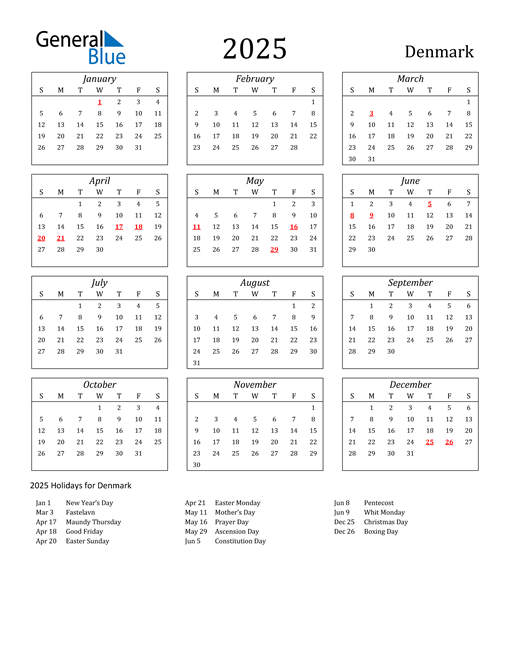
Denmark, renowned for its enchanting landscapes, rich cultural heritage, and progressive social policies, also boasts a unique and vibrant holiday calendar. Understanding these holidays provides insight into the nation’s history, values, and traditions. This guide offers a comprehensive overview of Denmark’s 2025 public holidays, outlining their significance and potential benefits for visitors and residents alike.
Public Holidays in 2025
Denmark’s public holidays, or "helligdage," are days where most businesses and institutions are closed. These days are generally designated for celebration and reflection, offering opportunities for social gatherings, family time, and cultural immersion.
January
- New Year’s Day (Nytårsdag): January 1st, marks the beginning of a new year, a time for resolutions, festivities, and reflecting on the past year.
- Epiphany (Helligtrekongersdag): January 6th, commemorates the visit of the three wise men to the baby Jesus. While not as widely celebrated as other holidays, it remains a significant religious occasion for many.
April
- Good Friday (Langfredag): Friday before Easter, commemorating the crucifixion of Jesus Christ. This is a somber day, with many businesses and institutions closed.
- Easter Sunday (Påskedag): The Sunday following Good Friday, celebrating the resurrection of Jesus Christ. This is a joyful day marked by family gatherings, Easter egg hunts, and religious services.
- Easter Monday (2. Påskedag): Monday after Easter Sunday, providing an extra day for celebrations and relaxation.
May
- Great Prayer Day (Store Bededag): Fourth Friday after Easter, a day of prayer and reflection, originally observed for petitioning for good harvests. While its religious significance has somewhat diminished, it remains a cherished holiday.
June
- Ascension Day (Kristi Himmelfartsdag): Thursday forty days after Easter, commemorating the ascension of Jesus Christ into heaven. This is a day for religious observance and reflection.
- Pentecost (Pinsedag): Sunday seven weeks after Easter, celebrating the descent of the Holy Spirit upon the apostles. This is a significant religious holiday, often marked by festive gatherings and church services.
July
- Constitution Day (Grundlovsdag): June 5th, commemorating the adoption of the Danish Constitution in 1849. This day celebrates democracy, freedom, and civic engagement, often marked by public events and celebrations.
December
- Christmas Eve (Juleaften): December 24th, a day for family gatherings, traditional Christmas dinner, and the anticipation of Christmas Day.
- Christmas Day (Juledag): December 25th, the day celebrating the birth of Jesus Christ. This is a joyous occasion marked by gift-giving, festive meals, and spending time with loved ones.
- Boxing Day (2. Juledag): December 26th, traditionally a day for giving gifts to those who served the household, now a day for relaxation and enjoying the holiday season.
Beyond Public Holidays
While the aforementioned dates are official public holidays, Denmark also observes several other important events and celebrations throughout the year. These include:
- Carnival (Fastelavn): The Sunday before Lent, a traditional celebration with masked parades, festivities, and the symbolic beating of a "Fastelavns-tønde" (a barrel filled with treats).
- Saint Hans Eve (Sankt Hans Aften): June 23rd, a summer solstice celebration featuring bonfires, singing, and dancing.
- Midsummer (Midsommer): The Friday closest to June 24th, often celebrated with picnics, outdoor activities, and traditional Midsummer celebrations.
Understanding the Significance
Denmark’s holiday calendar is a reflection of its history, culture, and values. These holidays provide opportunities for:
- Preserving Traditions: By observing these holidays, Danes maintain a strong connection to their cultural heritage, passing traditions down through generations.
- Celebrating Religious Beliefs: Many holidays have religious roots, offering a chance for individuals to reflect on their faith and participate in religious ceremonies.
- Promoting Social Cohesion: Holidays often bring families and communities together, fostering a sense of belonging and shared experiences.
- Encouraging Relaxation and Recreation: Public holidays provide a chance for Danes to unwind, recharge, and enjoy leisure activities.
Benefits for Visitors
For visitors to Denmark, understanding the holiday calendar offers several benefits:
- Experiencing Authentic Culture: Participating in holiday celebrations provides a unique opportunity to immerse oneself in Danish culture and traditions.
- Enjoying Festive Atmospheres: Many holidays are celebrated with vibrant festivities, offering a chance to experience the spirit of Denmark firsthand.
- Planning Travel Accordingly: Knowing when public holidays fall can help visitors plan their travel to coincide with festive events or avoid potential business closures.
FAQs
Q: Are all businesses closed on public holidays?
A: While most businesses are closed on public holidays, some essential services like hospitals and pharmacies may operate on a limited basis. It’s advisable to check individual business hours before planning any activities.
Q: Are there any special events or activities associated with the holidays?
A: Many holidays are accompanied by traditional events and activities. For example, Easter is celebrated with egg hunts and Easter brunches, while Midsummer is marked by bonfires and folk music performances.
Q: How do Danes typically celebrate their holidays?
A: Danes generally celebrate holidays with family and friends, enjoying traditional meals, festive decorations, and cultural activities.
Tips
- Research Local Traditions: Before visiting Denmark during a holiday, take the time to learn about local customs and traditions. This will enhance your experience and ensure you participate respectfully.
- Book Accommodations in Advance: Holiday periods tend to be busy, so booking accommodations well in advance is recommended.
- Consider Off-Season Travel: If you prefer to avoid crowds, traveling during the shoulder season (spring or autumn) can provide a more peaceful experience.
Conclusion
Denmark’s 2025 holiday calendar offers a rich tapestry of celebrations, reflecting the nation’s history, culture, and values. Whether you’re a visitor or a resident, understanding these holidays allows you to appreciate the unique spirit of Denmark and participate in its vibrant traditions. By embracing the spirit of these celebrations, you can gain a deeper understanding of the Danish way of life and create memories that will last a lifetime.
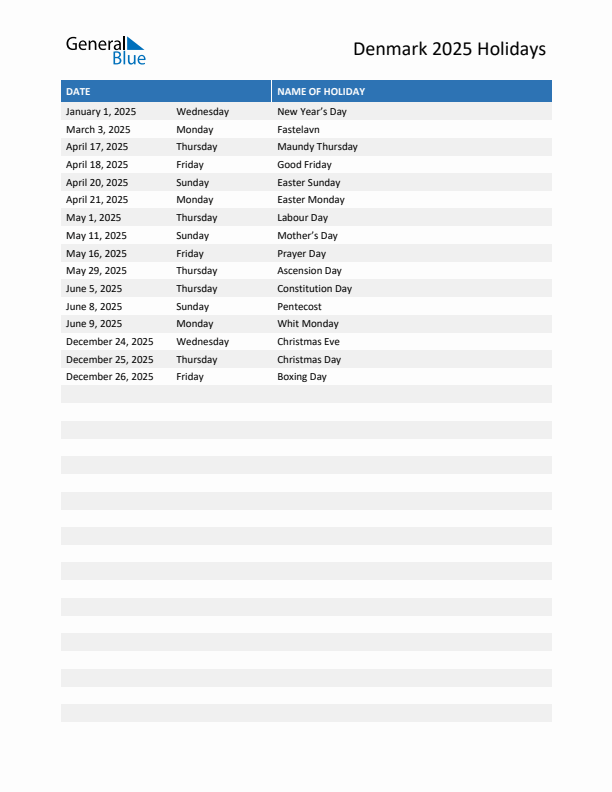
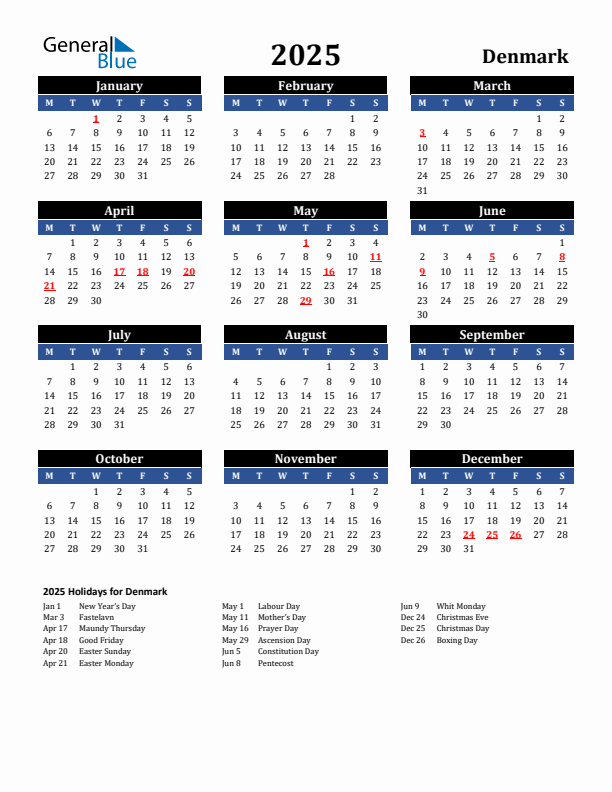


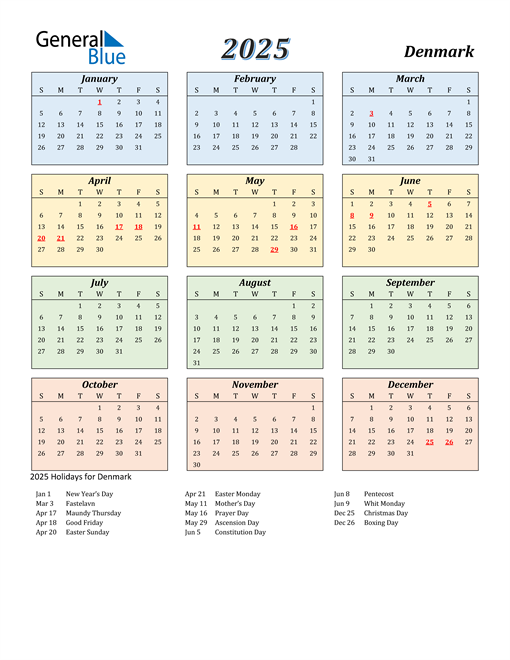
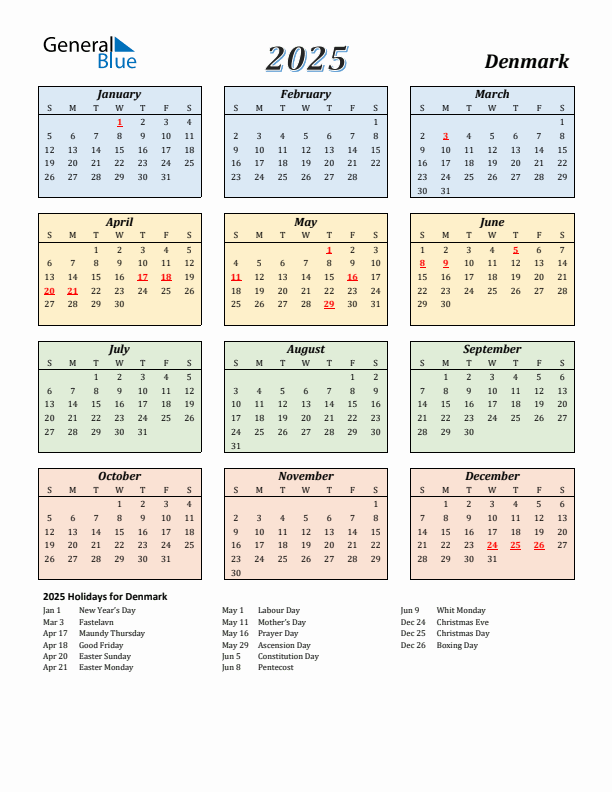
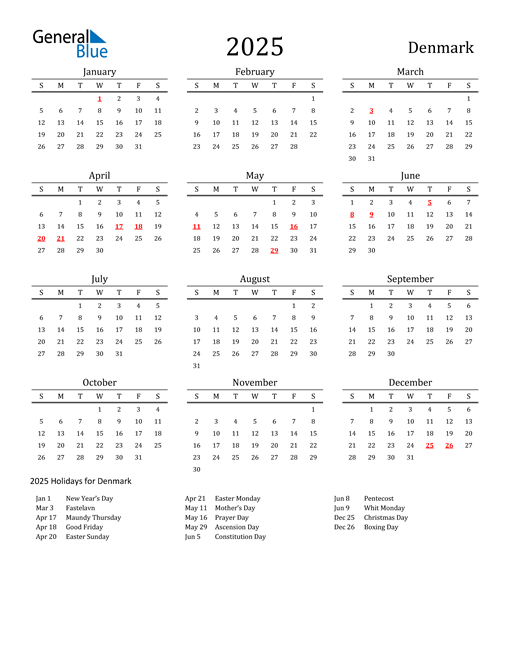
Closure
Thus, we hope this article has provided valuable insights into Denmark’s 2025 Holidays: A Comprehensive Guide. We appreciate your attention to our article. See you in our next article!